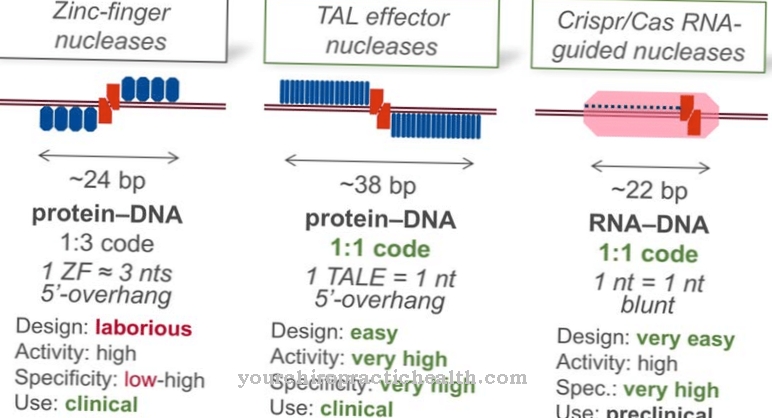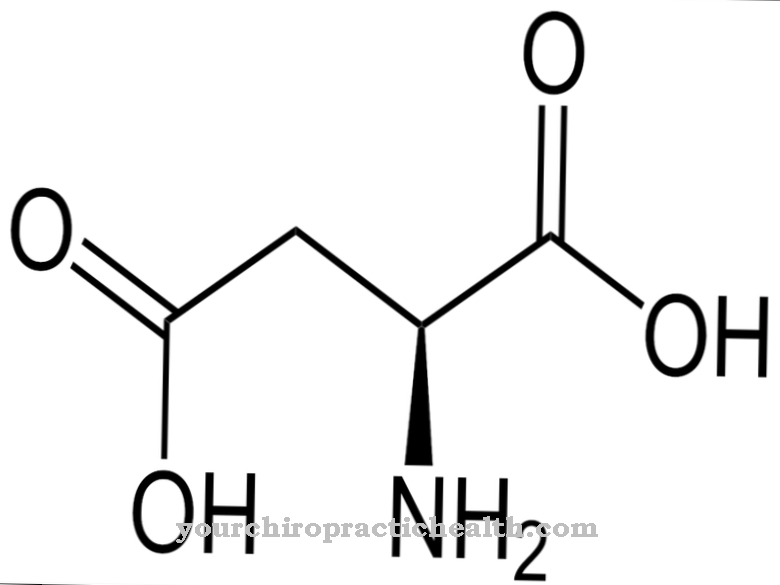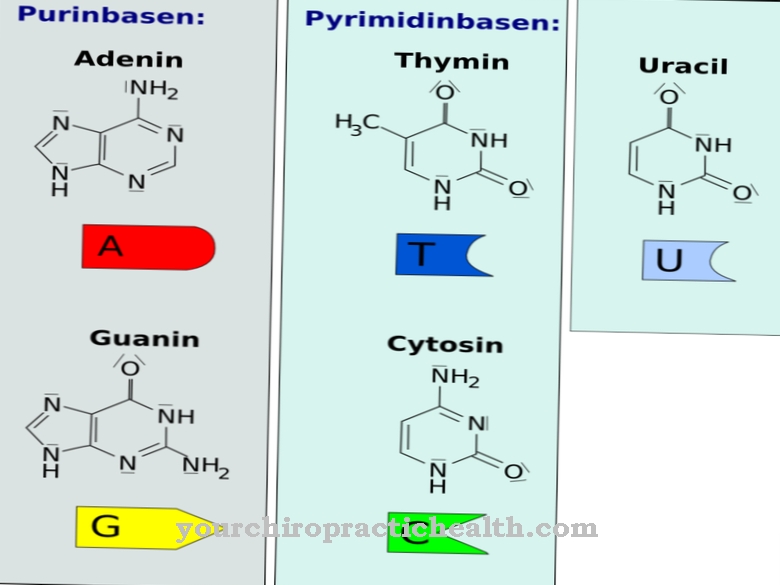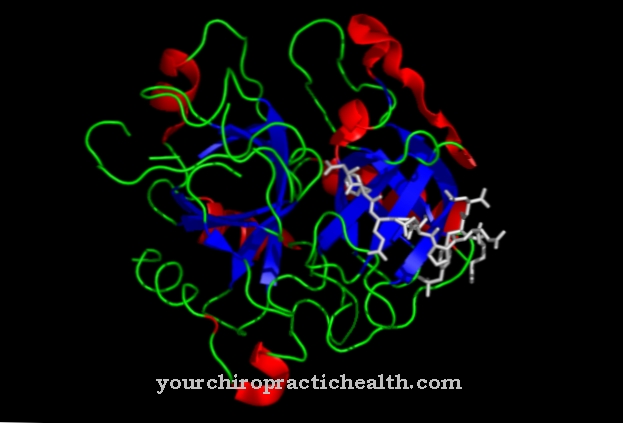Palmitic acid is the most abundant fatty acid besides stearic acid. It plays an important role in both plant and animal and human organisms. Most of the palmitic acid is bound in triglycerides.
What is palmitic acid?
Palmitic acid is a very common saturated fatty acid. Saturated means that it does not contain a double bond in the molecule. In all fats and fatty oils, a high percentage of palmitic acid is bound to glycerine. Since glycerine contains three hydroxyl groups, it usually forms triple esters with different fatty acids, which are known as triglycerides.
Palmitic acid consists of 16 carbon atoms that are linked together in a chain. Of these, 15 carbon atoms only form compounds with hydrogen and other carbon atoms. The 16th carbon atom is part of a carboxyl group in which a C = O double bond and a bond to a hydroxyl group are formed. The esterification with the hydroxyl group of alcohols takes place at the carboxyl group. In this sense, glycerine represents a triple alcohol and forms a triglyceride with three fatty acids, which, depending on the fatty acid composition, appears as a typical fat or fatty oil.
Besides stearic acid, palmitic acid is the main component of this class of substances. It is one of the fatty acids among many. However, it plays a special role in this. It occurs as the main intermediate product in the metabolism of many organisms. Like all fatty acids, palmitic acid is built up gradually by adding two carbon atoms in a repetitive process. In nature, palmitic acid is mostly found bound. In free form, however, it forms colorless, crystalline flakes, which melt at 61-64 degrees and evaporate at 351 degrees.
It is as good as insoluble in water, while it has good solubility in many organic solvents. The term palmitic acid is derived from palm oil, because this fatty acid is particularly common there.
Function, effect & tasks
Palmitic acid plays an important role in the structure of all organisms. It occurs mainly in triglycerides in both plant and animal organisms. There it serves as the main energy store alongside other fatty acids and glycerine. Furthermore, all cell membranes consist of phospholipids.
Phospholipids are formed by the esterification of fatty acids with phosphoric acid. They also contain palmitic acid as a major component. Phospholipids have both a lipophilic and a hydrophilic molecular component. The phosphoric acid acts as the hydrophilic part, while the fatty acids, including palmitic acid, represent the lipophilic part. This peculiarity allows phospholipids to differentiate between different phases and at the same time mediates the phase transition of different substances. Above all, they cause cells to be separated from the intercellular space so that important biochemical processes can take place undisturbed within the cells.
As already mentioned, palmitic acid is also the main component of the triglycerides, which serve as energy stores for the organism. In times of excess food, fat reserves are built up, with a new synthesis of fatty acids mainly taking place. Palmitic acid is the first fatty acid that is formed during lipogenesis. It serves as a starting material for the synthesis of higher fatty acids. If there is a lack of food, these fat reserves and thus also the fatty acids are gradually broken down again. Palmitic acid thus serves as the starting point for the formation of higher fatty acids and thus for building up triglycerides as energy stores and phospholipids as the main component of cell membranes.
Education, occurrence, properties & optimal values
Palmitic acid occurs ubiquitously. Every organism is dependent on palmitic acid. Both the plant and the animal or human organism are able to produce palmitic acid. In the course of lipogenesis, units of two carbon atoms each are attached to the carbon chain. As a result, the fatty acids usually consist of even-numbered chains.
In the case of palmitic acid there are 16 carbon atoms. Stillingia oil contains a particularly large amount of palmitic acid (60-70 percent). Stillingia oil is obtained from the flowering plant Stillingia sylvatica, which is native to the southeastern USA. Palm oil, in turn, contains between 41 and 46 percent palmitic acid. This is followed by beef tallow, lard, butter fat and cocoa butter with up to 30 percent. Cottonseed oil and avocado oil are also rich in palmitic acid. The depot fat in humans contains between 20 and 30 percent of this fatty acid. Palmitic acid is also used in cosmetic products and soaps. It gained notoriety as an important raw material for the production of napalm.
Diseases & Disorders
Palmitic acid is a saturated fatty acid and, according to conventional beliefs, excessive consumption should lead to high blood lipid levels with the resulting consequences. However, contradicting results have been obtained in different studies.
It has even been shown that saturated fatty acids such as palmitic acid increase blood lipid levels, but not only bad LDL cholesterol but also good HDL cholesterol are increased. Since their relationship to each other does not change, a higher consumption of palmitic acid has no effect on health according to certain studies. However, the ratio of saturated to unsaturated fatty acids also plays a role. However, this ratio is shifted in favor of saturated fatty acids and their raw material palmitic acid, especially with a reinforced diet with carbohydrates, since saturated fatty acids are always formed first.
These can only be converted into unsaturated fatty acids afterwards. However, this biochemical reaction mechanism is limited in the human organism, so that an excessive diet with carbohydrates produces more palmitic acid, which leads to a disturbance of the ratio of saturated to unsaturated fatty acids. As a result, insulin resistance, toxic effects on the pancreas, slowing down of fat burning and pro-inflammatory processes develop.




























.jpg)